
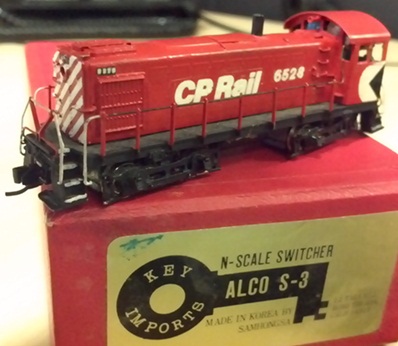

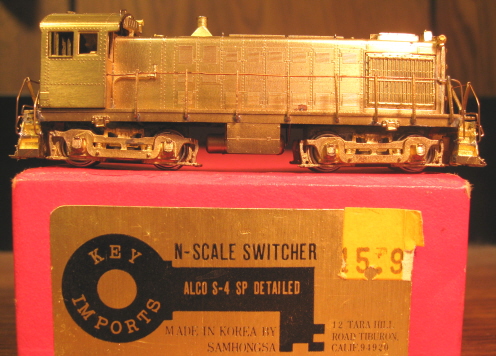




Introduced: 1983
These models (S-1, S-2, S-3, S-4) all came out at the same time, and as such I'm going to assume they all sport the same basic chassis/mechanism. So, to save myself a bit of time I'm going to cover them all here.
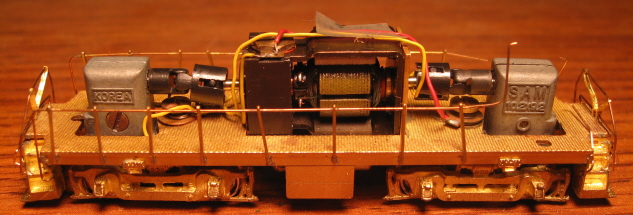
The mechanism is very typical of 1980s Samhongsa design. The chassis is brass and quite light (with most of the model's weight coming from its shell). The motor is an open-sided 5-poler. All wheels provide pickup (no traction tires). Current is collected by flimsy wheel-top wipers and transferred to the motor by wires (two per truck). The two-piece driveshaft is plastic. All wheels are geared. The gearing is a mixture of metal and plastic. There is no lighting, no couplers, and no window glass. Wheel flanges are reasonably sized, so no problems on Code-55 rails.
Despite the extremely dated design, performance is surprisingly good. Overall running is smooth and quiet. Throttle response is extremely fine, with superb slow-speed creep. The top-end speed is quite reasonable. Pickup is excellent, allowing this loco to creep slowly through turnouts without difficulty. Pulling power is good.
Unfortunately, these models have not aged well at all - this due to the plastic gears inside of the truck towers. Whatever plastic Samhongsa used way-back-then turns out to have been prone to shrinking and/or cracking. And the end-result (in the 21st century) is a lot of locomotives that spin their motors and driveshafts quite well, but with none of that motorized enthusiasm making it to the trucks. And beware - adding any sort of lubrication into the mix at this point will only makes things worse. My S-4 ran OK for a while, but eventually became a basket case. No doubt about it, the stress of operations will ultimately reveal the deterioration of those plastic gears - at which point your Alco will become very noisy and very parked.
So, decent running models with an iffy design (vis'a'vis the wheel-wipers and wiring). Sounds like a "B" rating to me. Unfortunately, based on my experiences they seem to be performing at "F" levels these days. Then again, replacement gears are an option (NWSL part #1089-6), so I guess I'll split the difference and give them an overall "C" rating.
Trivia - the S-4 was available in several different configurations - Standard, SP and CPR. The SP version has extra marker lights on the front corners of the hood, a different bell, and number boards on the front of the cab. The CPR version was a special production run commissioned by Van Hobbies (an erstwhile Vancouver hobby shop that at one time specialized in brass models of Canadian prototypes). These models were all sold undecorated -

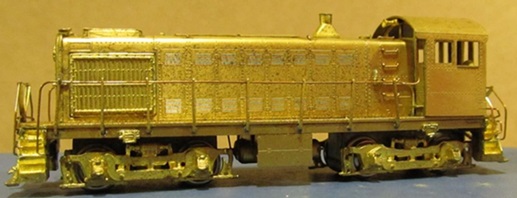
I don't know what it is exactly that makes this particular model a "CPR" S-4. All of the prototypical CPR S-4's I've seen pictures of have large auxiliary fuel tanks mounted on the running boards just forward of the cab (a very distinctive feature that this model lacks). I also don't know when it was that VH imported these models, but since they share the exact same internals as the Key imports, I'm assuming it was right around the same time that Key imported their's. And since I've only come across a couple of these in over a decade of eBay shopping, I'm assuming the production numbers were extremely limited (to say the least).
Van Hobbies also imported CPR S-2 models. And once again, I have no idea what (if anything) about them would differentiate them from the non-CPR S-2s.
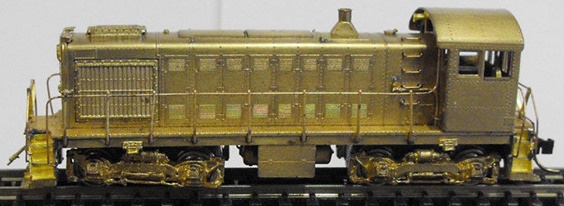

To remove the shell, unscrew the three screws on the bottom of the chassis (two on the cab end and one on the nose end). The shell should lift right off at that point (just make sure to free all the handrails first).
Grade: C ("B" with the truck tower gears replaced)
Reviewed: 3/84 Model Railroader ("Key's new models, manufactured in Korea by Samhongsa, represent all four (S-1, S-2, S-3 and S-4) of these Alco switchers as well as an extra S-4 that includes Southern Pacific detailing. All of them share the same overall dimensions (a scale 42'-6" long over the footboards, 14'-0" high, and 10'-0" wide), construction, and mechanism, and their performance is, not surprisingly, similar. The carbody of each is a mixture of etched and formed sheet brass, brass castings, and formed wire parts. Everything is neatly soldered together to achieve a strong assembly without having excess solder visible anywhere. Because of the small scale involved, the quality of the etched parts is critical. In this case the manufacturer certainly rose to the occasion and produced some of the nicest work of this type I have seen... The hood doors stand our slightly in relief from the hood with the hinges and latches inset in the doors as they should be. All of the hood joint lines are recessed, and appropriate scale size rivets run along each joint. The overall effect is better than the etching work that is often found on larger scale models.
"A number of new lost-wax castings can also be found on these models. The truck sideframes, pilot assemblies, front end of the hood, radiators, stack, and the cab interior parts are brass castings. All of these castings are well done, but I was a bit disappointed to find grab irons cast into the front end of the hood. With all the other nice detailing (including a grab iron ladder on the fireman's side of the hood), this one group of cast grab irons seems out of place. A good-sized open-frame DC motor sits in the middle of the frame... The trucks have cast-zinc alloy gearboxes and brass gears to drive all the axles. Small spring brass wipers ride on the wheel treads so all of the wheels pick up power.... (our samples engines) were all extremely smooth-running... Continuous slow speed is excellent - in fact, better than many larger scale engines can achieve. Their top speed is just about right compared to the prototype's rated 60 MPH, but I doubt that many prototype switchers ever ran that fast. Personally, I feel the speed range is just right for model railroad switching activities. Couplers are not included with these models... Southern Pacific modelers will like the special S-4 unit that Key has made just for them. It has the SP road service details that appeared on S-4s in series 1551-1567 for local freight work. These models have extra marker lights on the front corners of the hood, a different bell, and number boards on the front of the cab. Overall, these are excellent models of one of America's most common yard diesels. Price not specified.")